Last Updated on November 26, 2025 by Packoi Team
Choosing the right packaging for your business is a perpetual balancing act. You need materials that protect your product during transit, look stunning on the shelf, and increasingly—meet consumer demands for sustainability. But navigating the world of “eco-friendly” materials can be confusing. Is that plastic pouch actually recyclable? Is glass too heavy to ship sustainably?
This guide breaks down the top recyclable packaging materials available in 2025 to help you make the right choice for your brand, your budget, and the planet.
Why Switch to Recyclable Packaging?
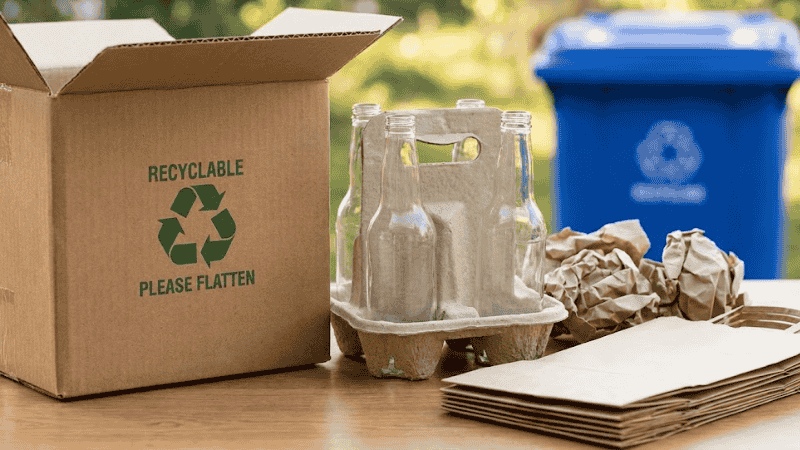
The shift toward sustainable packaging isn’t just a trend; it’s a fundamental change in how businesses operate. Understanding the drivers behind this shift helps justify the investment.
Consumer Demand
Studies consistently show that over 70% of consumers are willing to change their consumption habits to reduce their environmental impact. They are actively looking for brands that share their values.
Packaging is the first physical touchpoint where you can demonstrate that commitment. When a customer receives a package that is easy to dispose of responsibly, it creates a “feel-good” moment that builds loyalty. Conversely, dealing with excessive, non-recyclable waste can lead to “packaging guilt” and deter repeat purchases.
Cost Efficiency
While some eco-friendly options have a higher upfront cost, the long-term economics often favor sustainability. Materials like recycled corrugated cardboard are frequently cheaper than virgin alternatives due to established supply chains.
Additionally, optimizing your packaging design to be lighter (using materials like flexible paper instead of heavy glass) can drastically reduce shipping fees and fuel surcharges.
Regulatory Compliance
Governments worldwide are tightening regulations regarding single-use plastics and packaging waste. Extended Producer Responsibility (EPR) laws are becoming common, making brands financially responsible for the end-of-life disposal of their packaging.
Switching to recyclable materials now future-proofs your business against these looming regulations.
Top 7 Recyclable Packaging Materials
Understanding the nuances of these materials will help you select the best option for your specific product needs.
While that sounds simple, there are a couple of things that you need to know about each of these environmentally friendly packaging materials.
1. Corrugated Cardboard

Corrugated cardboard is the gold standard for shipping and logistics. Distinct from standard cardstock, it is constructed with three layers of paper: an inside liner, an outside liner, and a ruffled, fluted sheet sandwiched in between. This architecture gives it incredible strength relative to its weight (high strength-to-weight ratio).
It is arguably the most sustainable packaging material available. It is made from a renewable resource (wood pulp), is often composed of high percentages of post-consumer waste (PCW), and has one of the highest recycling rates in the world—over 90% in many developed countries.
Corrugated cardboard recycling technology has become very mature nowadays. In the recycling process, cardboard is pulped, cleaned, and de-inked. The fibers are then pressed into new sheets. However, fibers shorten with each cycle, so some virgin pulp is usually added to maintain strength.
Best For: Shipping boxes, subscription boxes, and protecting heavy or fragile items.
2. Kraft Paper & Paperboard
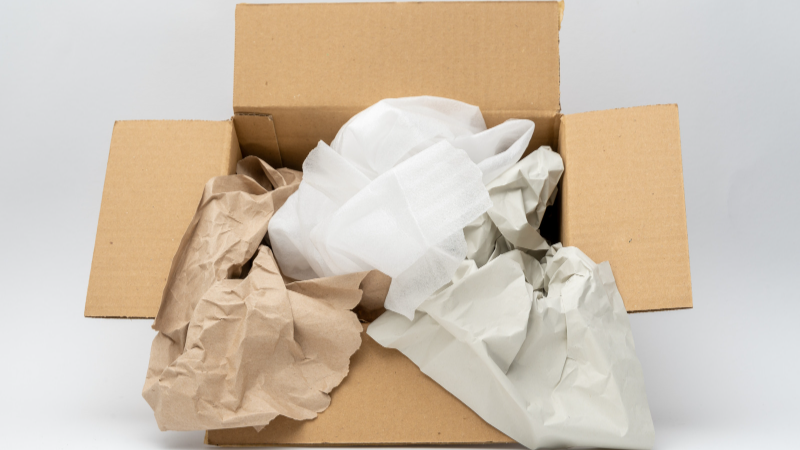
While corrugated is for shipping, paperboard is for the shelf. This category includes the folding cartons used for cosmetics, cereal boxes, and lightweight retail packaging.
Unbleached Kraft paper is particularly popular for brands seeking a “natural” aesthetic. It is inherently biodegradable, compostable, and recyclable. Unlike bleached white paper, the chemical processing for kraft is less intensive, retaining more of the wood’s natural strength.
When customizing the paperboard packaging, one thing to be wary of is the lamination. Adding a glossy or matte plastic laminate to paper makes it difficult or impossible to recycle because the plastic film cannot easily be separated from the paper fibers. Instead, opt for water-based varnishes or aqueous coatings to achieve a similar finish without compromising recyclability.
Best For: Cosmetic boxes, food packaging, gift bags, and retail display boxes.
3. Glass

Glass is unique because it is infinitely recyclable. Unlike paper (which has shorter fibers each time it’s recycled) or plastic (which degrades in quality), glass can be melted down and reformed endlessly without losing purity or quality.
It creates an undeniable premium feel for a product. Its non-porous nature provides an airtight barrier, making it excellent for preserving flavor and shelf life.
If you choose glass, then you also need to consider weight. Glass is heavy and fragile, which significantly increases shipping costs and the carbon footprint associated with transportation. It requires robust secondary packaging to prevent breakage.
Best For: Jars for food, high-end cosmetics, beverages, and luxury candles.
4. Recyclable Plastics (PET & HDPE)

Not all plastic is the enemy, and not all plastic is created equal. Plastic offers durability and moisture resistance that paper cannot match. If your product requires plastic, sticking to specific resin codes ensures it remains recyclable.
- PET (Polyethylene Terephthalate – Resin Code #1): This is clear, strong, and the most widely recycled plastic in the world (think water bottles). It is lightweight and shatterproof.
- HDPE (High-Density Polyethylene – Resin Code #2): Known for being durable and opaque (think shampoo bottles or milk jugs), HDPE is also widely accepted in curbside recycling programs.
Avoid PVC (#3) and Polystyrene (#6) whenever possible, as these are rarely accepted by municipal recycling facilities and often end up in landfills.
Best For: (PET)Water bottles, clear food containers, salad dressing bottles, and peanut butter jars; (HDPE)Shampoo bottles, detergent containers, milk jugs, and cleaning spray bottles.
5. Aluminum & Metal
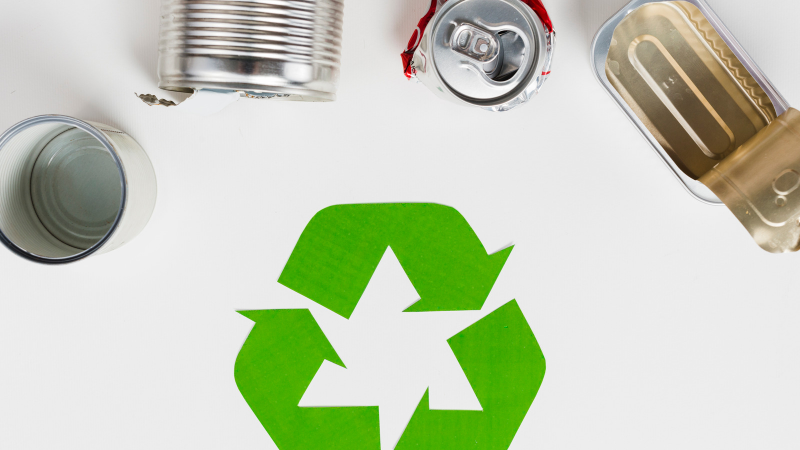
The food and beverage industry has long relied on metal, particularly aluminum, for good reason. Like glass, aluminum is infinitely recyclable. In fact, recycling aluminum saves about 95% of the energy required to produce new aluminum from raw bauxite ore. This massive energy saving makes aluminum one of the most valuable materials in the recycling stream.
It is lightweight, which saves on shipping compared to glass, and offers excellent protection against light, oxygen, and moisture—the three enemies of fresh products.
Best For: Canned goods, beverages, balms, salves, and reusable tins.
6. Wood

Wood is a sturdy, renewable resource that offers a unique, rustic aesthetic. It is highly durable, often allowing the packaging to be repurposed by the customer as storage or home decor, extending its lifecycle indefinitely.
However, recyclability depends on treatment. Untreated wood is biodegradable and recyclable (often turned into mulch or particleboard). But wood that has been heavily treated, varnished, or painted to last for decades often contains chemicals that make it unsuitable for composting or standard recycling.
Pay attention to certification when choosing wood packaging. Always look for FSC (Forest Stewardship Council) certified wood, which ensures the material comes from responsibly managed forests.
Best For: Luxury gift crates, wine boxes, and pallets.
7. Mono-Material Flexible Packaging
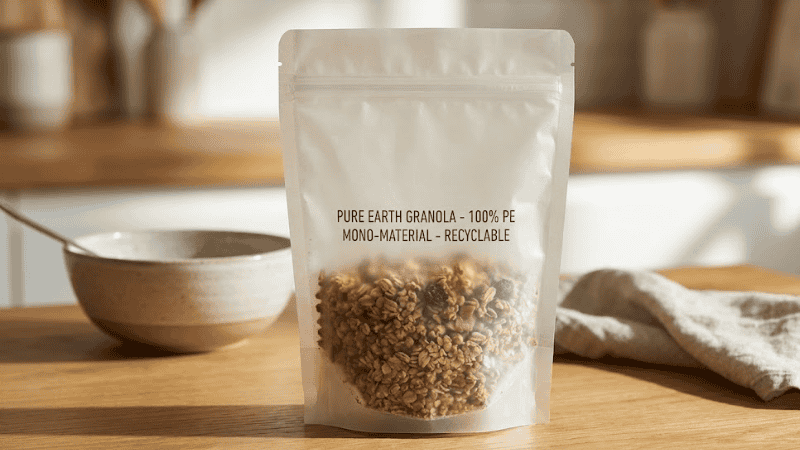
This is a newer, high-value addition to the sustainable packaging landscape. Traditional flexible pouches (like chip bags or stand-up coffee pouches) are often made of mixed multi-layers—aluminum foil laminated to plastic, laminated to paper. These inseparable layers make recycling impossible because the materials cannot be split apart.
Mono-material pouches solve this problem. They are constructed from a single type of plastic polymer (usually Polyethylene/PE). Because the entire pouch consists of one material, it can be melted down and recycled alongside other soft plastics (often at store drop-off locations).
Best For: Snacks, coffee, powders, and liquids where flexibility is needed.
Comparative Analysis of Materials
To help you decide, here is a comparison of the top materials based on key business factors.
| Material | Recyclability | Durability | Shipping Weight | Best Use Case |
|---|---|---|---|---|
| Corrugated Cardboard | High (Widely accepted) | High (Structural strength) | Low | Shipping boxes, E-commerce |
| Kraft Paper | High (Compostable) | Low (No moisture protection) | Very Low | Retail boxes, dry goods |
| Glass | High (Infinite recycling) | High (Fragile) | Very High | Premium food, cosmetics |
| PET Plastic (#1) | Moderate (Widely accepted) | Moderate (Flexible) | Low | Beverages, liquids |
| Aluminum | High (High value) | High (Dents easily) | Low | Canned drinks, balms |
| Wood | Low (Repurposed mostly) | Very High | High | Luxury gifts, heavy items |
| Mono-PE Pouches | Moderate (Store drop-off) | Moderate (Flexible) | Very Low | Refills, snacks, coffee |
How to Ensure Your Packaging Actually Gets Recycled?
Choosing the right material is only step one. The design of your packaging plays a critical role in whether it successfully makes it through the recycling process.
1. The Rule of “Mono-Materials”
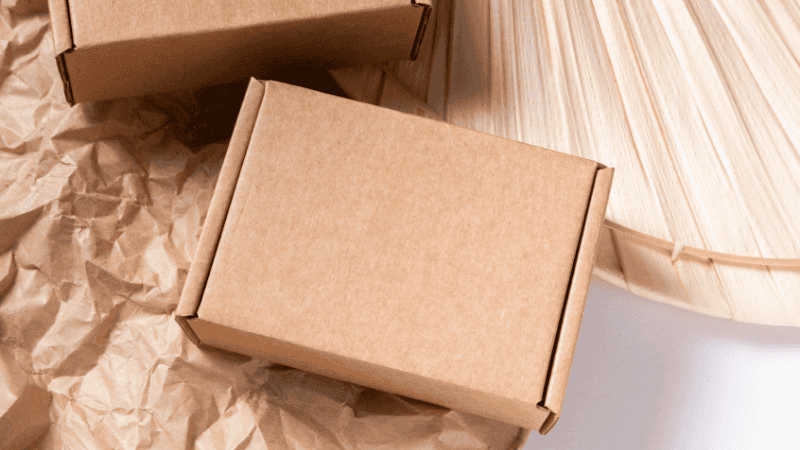
Recycling facilities rely on separating materials. A mixed-material package is a recycler’s nightmare. If you glue a plastic window into a paper box or use a metal cap on a glass jar, the consumer must separate them. If they don’t, the whole item often ends up in the landfill.
Design packaging where materials are easily separated by hand, or better yet, use a single material (e.g., a 100% paper box with no plastic window).
2. Watch Your Inks and Gluescled
Even a 100% cardboard box can become waste if covered in the wrong substances. Petroleum-based inks and heavy, non-soluble glues can contaminate the recycling batch during the pulping process.
Solution: Switch to soy-based or vegetable-based inks. These organic inks de-ink easily during recycling. Use water-soluble adhesives that dissolve during the wash cycle of recycling.
3. Educate Your Customers
Don’t leave your customers guessing. Confusion is a leading cause of “wish-cycling” (throwing non-recyclables in the bin, hoping they will be recycled).
Print a clear “Please Recycle Me” message or use standardized labeling like the How2Recycle label on your box. If a label or liner needs to be peeled off before the rest of the package can be recycled, tell them explicitly!
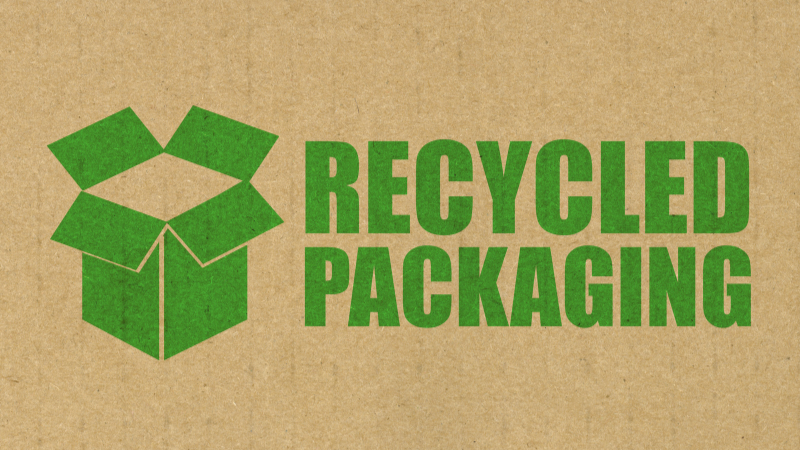
4. Don’t Forget the “In-Between” Stuff
When designing packaging, it’s easy to focus on the box and forget the void fill. If you ship a recyclable box filled with non-recyclable Styrofoam peanuts and sealed with plastic tape, you’ve compromised the sustainability of the package.
Switch to Water-Activated Tape (Paper Tape) instead of standard plastic packing tape. Use Crinkle Paper, Kraft Paper, or Corrugated Wrap instead of Styrofoam or bubble wrap.
FAQs
Q1: Is corrugated cardboard biodegradable?
Yes. Since it is made primarily from wood pulp, it will break down naturally. However, recycling it is better as it saves trees.
Q2: Can you recycle pizza boxes?
Generally, no. Grease and oil contaminate the paper fibers during pulping. The clean lid can be recycled, but the greasy base should be composted or trashed.
Q3: What is the most eco-friendly packaging material?
Corrugated cardboard is widely considered the best balance. It is renewable, widely recycled, and lightweight (low carbon footprint).
Q4: Can I recycle “bioplastics” (PLA) with regular plastic?
No. Bioplastics (like corn-starch plastic) look like regular plastic but have a different chemical structure. If mixed with PET or HDPE, they contaminate the recycling stream. They must be sent to an industrial composting facility.
Q5: Do I need to remove tape from boxes before recycling?
It depends. If you use plastic tape, it is helpful to remove it, though modern facilities can screen some of it out. If you use paper water-activated tape, you do not need to remove it, as it recycles right along with the box.
Conclusion
Recyclable packaging gives brands a chance to reduce environmental impact, meet consumer expectations, and stay compliant with tightening regulations. By choosing the right materials and designing with recyclability in mind, businesses can lower waste, improve customer satisfaction, and future-proof their packaging strategy.
Go Green with Packoi’s Recyclable Solutions
Switching to recyclable packaging doesn’t mean you have to sacrifice quality or protection. In fact, it’s an opportunity to upgrade your brand’s image.
At Packoi, we specialize in FSC-certified, eco-friendly packaging solutions. From custom corrugated mailers to recyclable paper bags and mono-material pouches, we can help you design packaging that protects your product and the planet. We understand the nuances of inks, coatings, and structural design to ensure your packaging is truly sustainable.
Contact us today to start your sustainable packaging journey! We’ll work with you to find the perfect recyclable solution for your brand.




